Sample authorization letter template
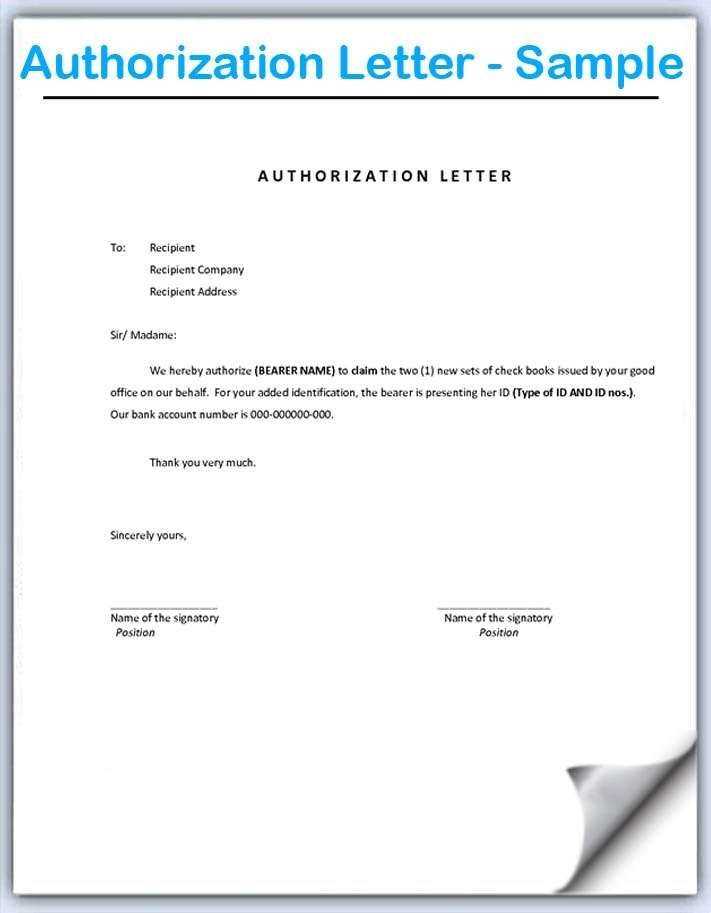
Writing an authorization letter is straightforward when you have the right structure. Begin by clearly stating the purpose of the letter and identify the person being authorized. This ensures both parties understand the scope of the permission being granted.
Start with the recipient’s details–address the letter to the person or organization receiving the authorization. Be precise in your request. Specify what the authorized person is allowed to do, such as picking up documents, accessing accounts, or completing a transaction on your behalf.
Use clear language throughout the letter. Avoid ambiguity. Specify the duration of the authorization if necessary, and make sure to include any conditions or limitations. Don’t forget to sign the letter to make it valid.
Here’s the revised version:
Begin by stating the purpose of the letter clearly at the top. This ensures the recipient understands the intent right away. Next, include the name of the person granting authorization, their position or title, and their contact details. This establishes the authority behind the document.
In the body of the letter, specify what the authorized person is allowed to do. Clearly outline the scope of their authority, such as handling specific tasks, signing documents, or accessing certain information. Be concise but detailed enough to avoid any ambiguity.
Next, include the duration of the authorization. Whether it’s for a specific date or an open-ended period, this will clarify how long the authorized person holds this responsibility.
Conclude with a statement reaffirming that the authorization is given voluntarily and with full awareness. A polite closing sentence is always recommended to maintain professionalism.
Ensure that both the authorizer and the authorized person sign the letter to validate the agreement. Attach any necessary identification or documents to back up the authorization.
- Sample Authorization Letter Template
Below is a clear and straightforward template for an authorization letter that you can customize for your specific needs:
- [Your Name]
- [Your Address]
- [City, State, ZIP Code]
- [Phone Number]
- [Email Address]
Date: [Insert Date]
To whom it may concern,
I, [Your Full Name], hereby authorize [Authorized Person’s Full Name], [Relationship to You], to act on my behalf regarding [mention the purpose of the authorization]. This letter grants them full rights to [describe the scope of authority], including [list specific tasks, actions, or decisions they are authorized to make].
The authorized person may provide any necessary documentation, sign forms, and take actions necessary to complete the tasks mentioned above.
This authorization is valid from [Start Date] until [End Date] unless revoked earlier in writing by me.
If you require any additional verification or have questions, please feel free to contact me at [Your Phone Number] or [Your Email Address].
Sincerely,
[Your Full Name]
Signature: ___________________
Witness (if required):
- Name: [Witness Name]
- Signature: ___________________
- Date: [Date of Signature]
Ensure to fill in all personal details accurately and adjust the authorization scope as needed for your situation.
Begin by including a clear heading with your full name, contact information, and date. This establishes the context and identifies the letter’s origin. Next, include a brief and specific salutation to the recipient, such as “To Whom It May Concern” or the recipient’s name if available.
State the Authorization Clearly
The core of the letter should specify the individual being authorized and the task they are permitted to undertake. Clearly state the purpose, including relevant dates or any time limits for the authorization. Use direct language and avoid unnecessary complexity.
Details of the Authorization
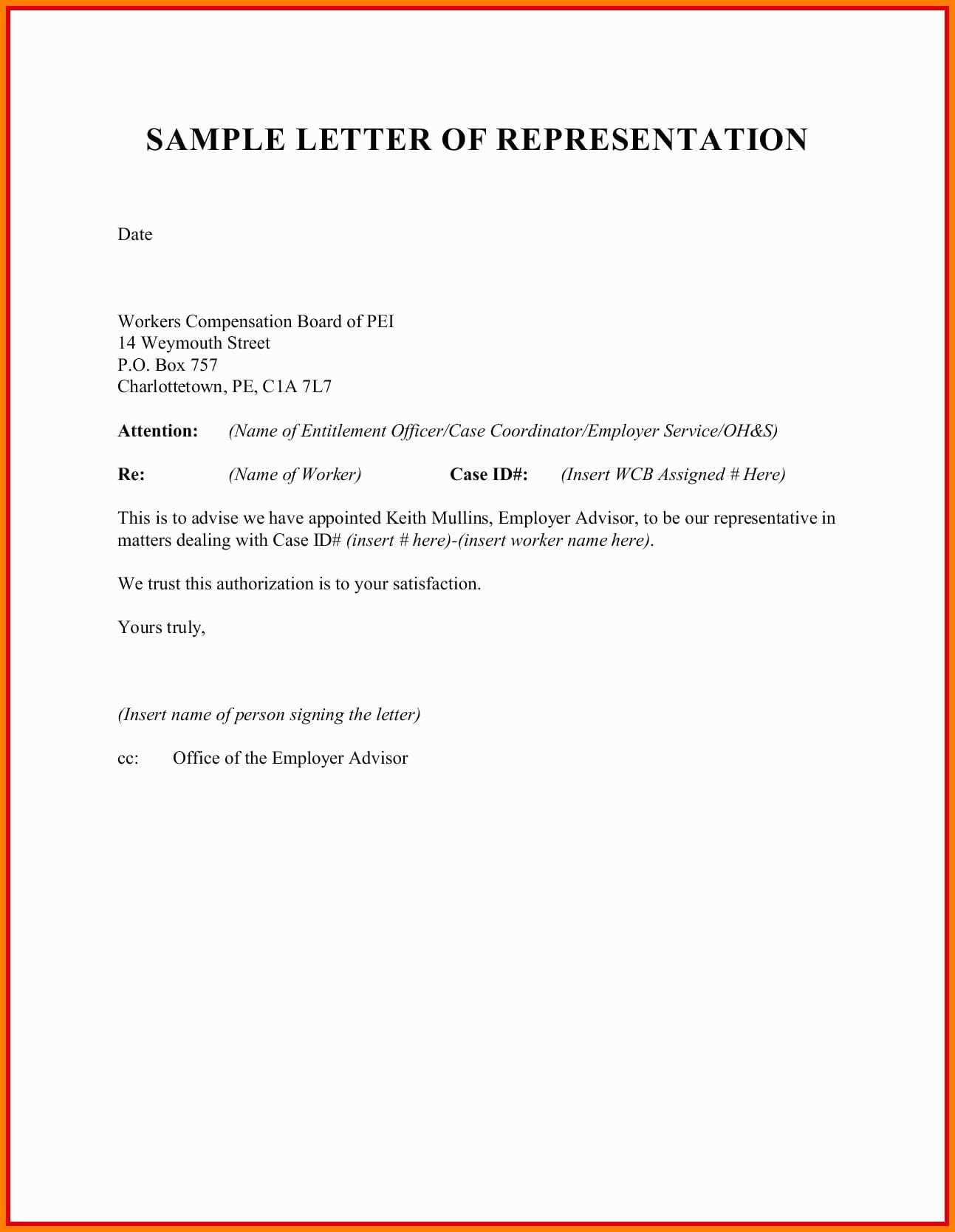
In this section, add any pertinent details such as the scope of authority, location, or actions authorized. If necessary, you can outline any specific instructions or conditions that must be met during the process.
| Detail | Description |
|---|---|
| Authorized Person | Full name and contact information of the person receiving authorization. |
| Purpose | Specific task or responsibility being granted. |
| Duration | Effective dates or expiration of the authorization. |
| Conditions | Any limitations or requirements attached to the authorization. |
End with a clear closing statement, such as “Sincerely” or “Best Regards,” followed by your signature and printed name. Always ensure the language is formal and concise, with no ambiguity in the assigned responsibilities.
Clearly state the full name of the person granting the authorization, along with their signature. This ensures the document is legally binding. Include the recipient’s name as well, specifying the actions they are authorized to carry out on behalf of the authorizer.
Clearly define the scope of authorization. Be specific about what the recipient is allowed to do, including any limits or restrictions. This prevents misunderstandings and ensures the recipient only acts within the defined boundaries.
Indicate the time frame of authorization. Specify the start and end dates, or note whether the authorization is permanent. This avoids ambiguity about the duration of the permission granted.
Provide contact information for both parties. In case of verification or clarification, this allows easy communication between the authorizer and the recipient.
Specify any supporting documents needed. If certain paperwork or identification is required, mention this to avoid delays in processing the request.
Use clear, direct, and unambiguous language when writing an authorization letter. Avoid jargon and overly complex wording, as it could confuse the recipient. Keep the tone formal but approachable, focusing on the purpose of granting authorization.
Consider the following points when choosing your language:
- State the intention clearly: Begin with a straightforward declaration, such as “I hereby authorize” or “This letter confirms my authorization for.” This sets the tone and removes any ambiguity.
- Use specific terms: Specify exactly what actions are being authorized. For example, “to act on my behalf in matters concerning” is more precise than a vague phrase like “to represent me.”
- Avoid unnecessary detail: Stick to the essential information. Don’t include extra context that doesn’t directly relate to the authorization. The goal is clarity, not elaboration.
By focusing on simplicity and precision, you ensure that the letter communicates its purpose effectively and leaves little room for misinterpretation. This approach builds confidence in the reader and streamlines the process for all parties involved.
An authorization letter is necessary when you need to grant permission for someone to act on your behalf. This can be useful in a variety of situations, such as handling business matters, collecting documents, or representing you in official proceedings.
Personal Transactions
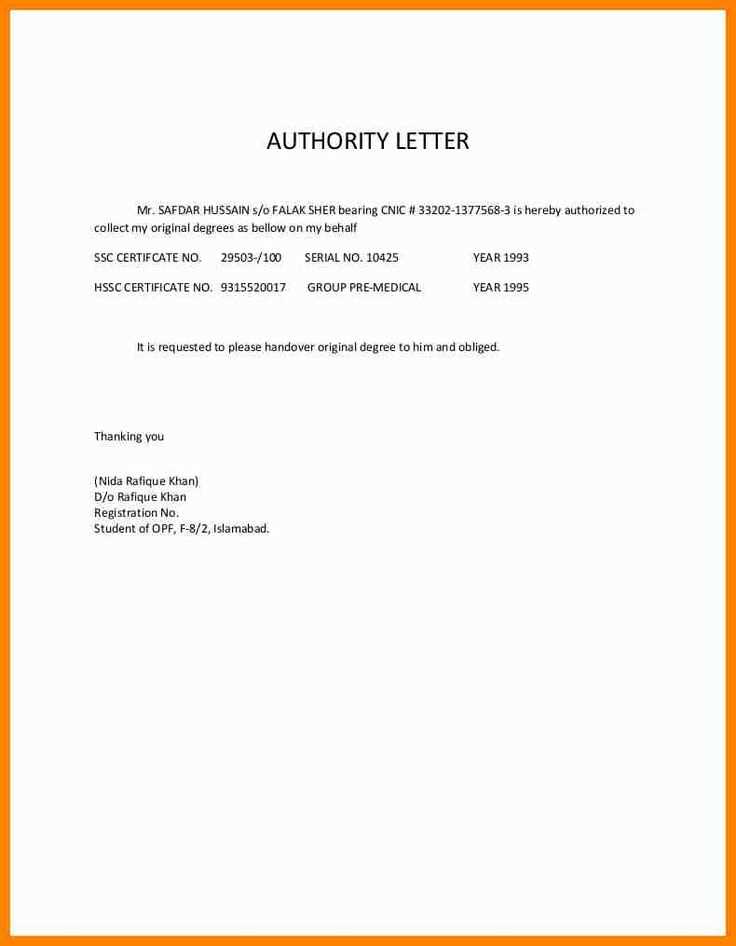
- Allow someone to pick up documents, packages, or items on your behalf.
- Provide a trusted individual with permission to sign documents for you if you cannot do it yourself.
Business and Legal Matters
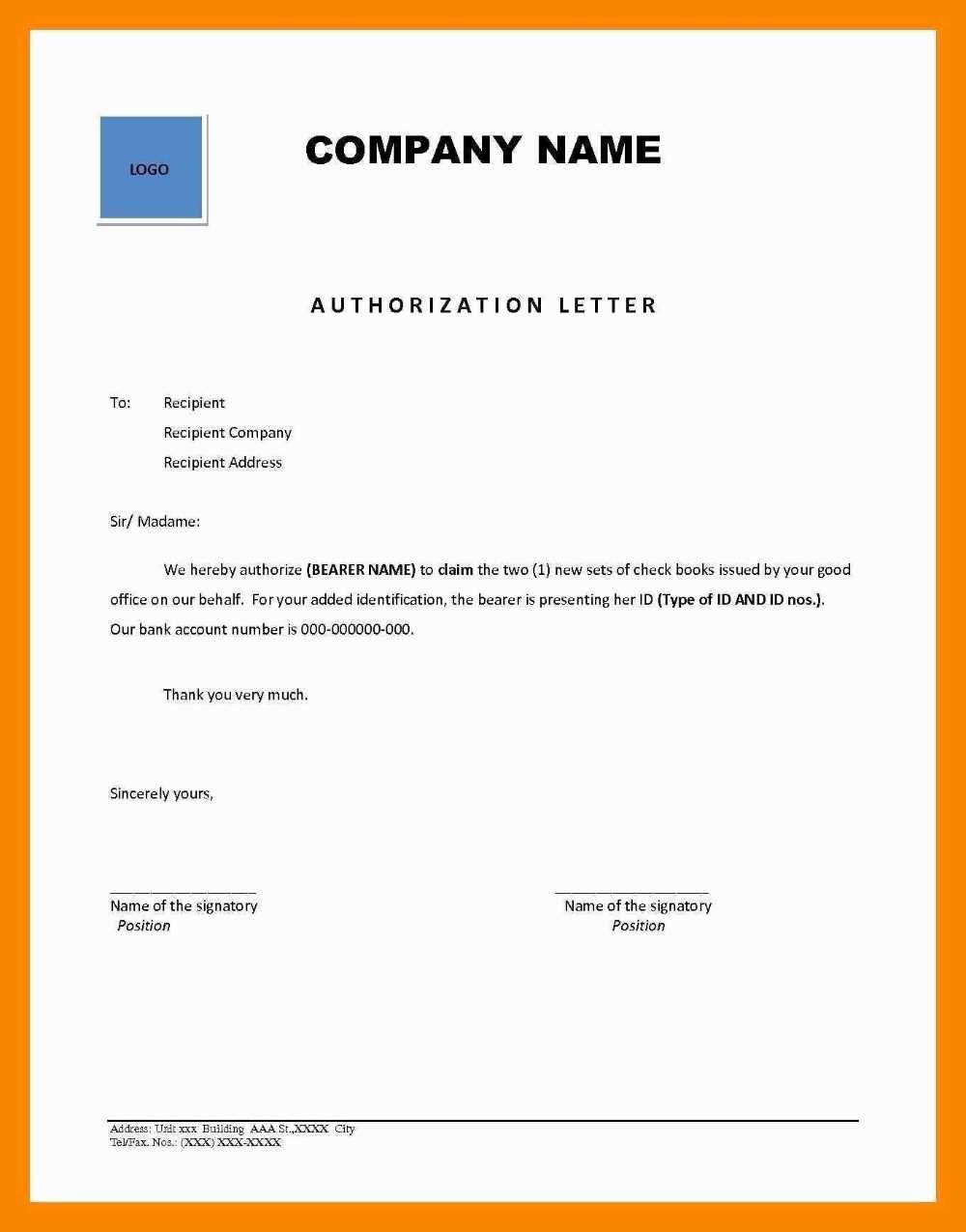
- Authorizing a representative to manage your business dealings or sign contracts when you are unavailable.
- Designating a person to act in your stead in legal matters such as court appearances or meetings with authorities.
Be precise with names and details. Incorrect or incomplete names can invalidate the letter. Always double-check spelling and titles, especially for formal contexts. Ensure you have the full name of the recipient and their correct title.
Do not use vague or ambiguous language. Clearly state the authorization being granted and any conditions involved. Avoid broad statements that could be interpreted in multiple ways, as they may cause confusion or legal issues.
Ensure the dates are correct. An authorization letter with missing or incorrect dates can cause delays or even render the letter ineffective. Include both the date of issue and the period during which the authorization is valid.
Avoid leaving sections of the letter blank. Each part of the authorization letter should be completed in full, including the recipient’s name, the tasks being authorized, and any required contact details. Blank spaces could be misinterpreted.
Don’t forget to include a clear signature. An unsigned letter will not be valid. Ensure you sign the letter at the end, and if necessary, include additional details like your contact information or witness signatures.
Be careful with legal terminology. Overusing or misusing legal terms can lead to misunderstandings. If you’re unsure about the correct phrasing, consult a professional before finalizing the letter.
| Common Mistake | Solution |
|---|---|
| Incorrect names | Verify the full names and titles of the involved parties. |
| Vague language | Be specific and clear about the scope of the authorization. |
| Missing or incorrect dates | Include both issue date and the duration of validity. |
| Leaving sections blank | Fill out all required fields in the letter. |
| Unsigned letter | Always sign the letter before submission. |
Begin by selecting a clean, professional font, such as Arial or Times New Roman, with a font size between 10 and 12 points. Ensure consistent spacing, typically 1.15 or 1.5 line spacing, and keep margins at 1 inch on all sides.
Use a Clear Structure
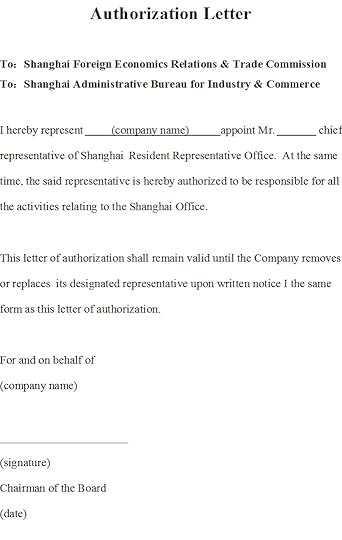
Organize your content logically. Start with a header that includes the title of the authorization letter, followed by a formal greeting. Clearly state the purpose of the document early on. Include the recipient’s details and your own, ensuring proper titles and full names are used. After the body, place a concluding statement that reaffirms the authority being granted, then add a signature line at the bottom.
Keep It Concise
Limit the content to the necessary details. Avoid excessive descriptions or irrelevant information. Stick to the point, using bullet points or numbered lists for clarity when outlining multiple instructions or actions. This ensures the document is both clear and easily digestible.
Sample Authorization Letter Template
Make sure to include the full name and contact information of the person granting authorization. This ensures clarity about the party giving consent.
Authorization Details
Clearly state the purpose for which authorization is being granted. Specify any limits or conditions to avoid confusion later. Mention any documents or identification required by the authorized individual for verification.
Signature and Date
End with the signature of the person giving authorization, followed by the date. This will confirm the validity and authenticity of the letter.